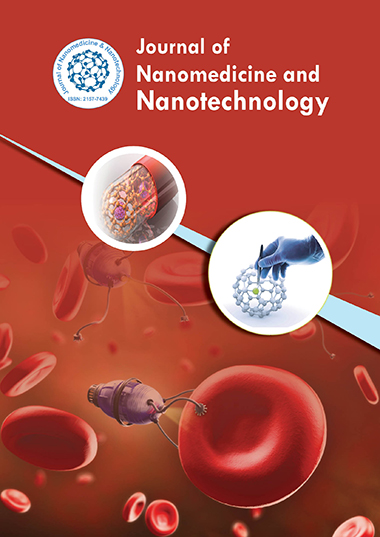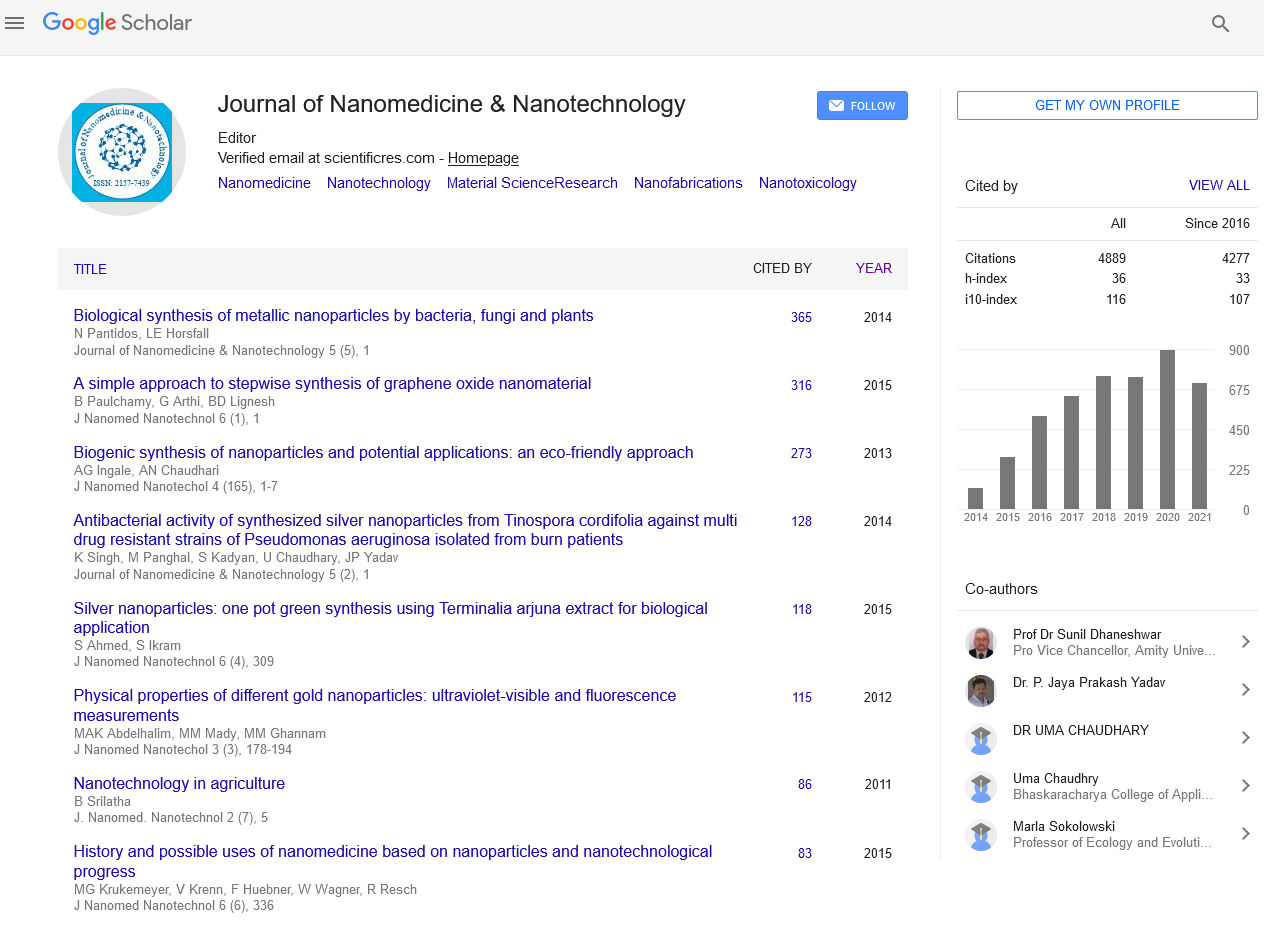Indexed In
- Open J Gate
- Genamics JournalSeek
- Academic Keys
- JournalTOCs
- ResearchBible
- China National Knowledge Infrastructure (CNKI)
- Scimago
- Ulrich's Periodicals Directory
- Electronic Journals Library
- RefSeek
- Hamdard University
- EBSCO A-Z
- OCLC- WorldCat
- SWB online catalog
- Virtual Library of Biology (vifabio)
- Publons
- MIAR
- Scientific Indexing Services (SIS)
- Euro Pub
- Google Scholar
Useful Links
Share This Page
Journal Flyer

Open Access Journals
- Agri and Aquaculture
- Biochemistry
- Bioinformatics & Systems Biology
- Business & Management
- Chemistry
- Clinical Sciences
- Engineering
- Food & Nutrition
- General Science
- Genetics & Molecular Biology
- Immunology & Microbiology
- Medical Sciences
- Neuroscience & Psychology
- Nursing & Health Care
- Pharmaceutical Sciences
Polymeric nanomaterials containing amino acids for controlled release of uridine
20th Asia-Pacific Nanotechnology Congress
July 23-24, 2018 Sydney, Australia
Gursel Soylev, Cansu Ilke Kuru and Umit Karademir
Oguzhan Ozkaya Educational Institutions, Turkey
Scientific Tracks Abstracts: J Nanomed Nanotechnol
Abstract:
Uridine which is a pyrimidine nucleoside has effects with different mechanisms for prevention of cells from damage, it is heavily used for reducing side effects of chemotherapy, increasing anti-tumor efficacy, reducing toxicity, improving brain functions and memory, therapeutic supportive effects in nervous system diseases and hereditary diseases. The development of nano-biotechnological systems for the controlled release of uridine will ensure effective use of uridine, so reduce side effects of chemicals to body, obtain therapeutic response of drugs and inhibit toxic effects of drugs at high doses. In the context of project, nanopolymers which are suitable for different drug applications, low cost, high drug loading, release and targeting in controlled release systems were synthesized by non-surfactant emulsion polymerization. Subsequently, uridine specificity immobilized metal ion affinity p(HEMA-MAC)-Cu+2 nanopolymers were characterized with SEM and Zeta-Size analysis, it was determined that the specific surface area of the nanopolymers reached as high as about 590.2 m²/g with dimensions through that 160 nm and spherical morphology. The incorporation of functional monomeric MAC into the structure has been demonstrated by ATR-FTIR analysis. Optimization of uridine adsorption conditions; The initial concentration of 1 mg/ml uridine, 15 min, 25 °C and 0.1 M pH=7 phosphate buffer were determined as optimum conditions. Also, p(HEMA-MAC)-Cu+2 nanopolymer???s uridine adsorption capacity about 6 times higher than the p(HEMA-MAC) nanopolymer because of affinity derivatization. In controlled release studies of uridine of the developed p(HEMA-MAC)-Cu+2 nanopolymer, it was determined that cumulative release amounts increased with increased uridine concentration. At physiological pH=7.4, approximately 87% of 2 mg/ml uridine loaded nanoparticles were shown to be controlled, efficient release within 75 minutes.
Biography :
Gursel Soylev is a Science High School student. He is working on his science project in Biochemistry Department, Ege University, Turkey.
E-mail: eczaneturkan@hotmail.com


